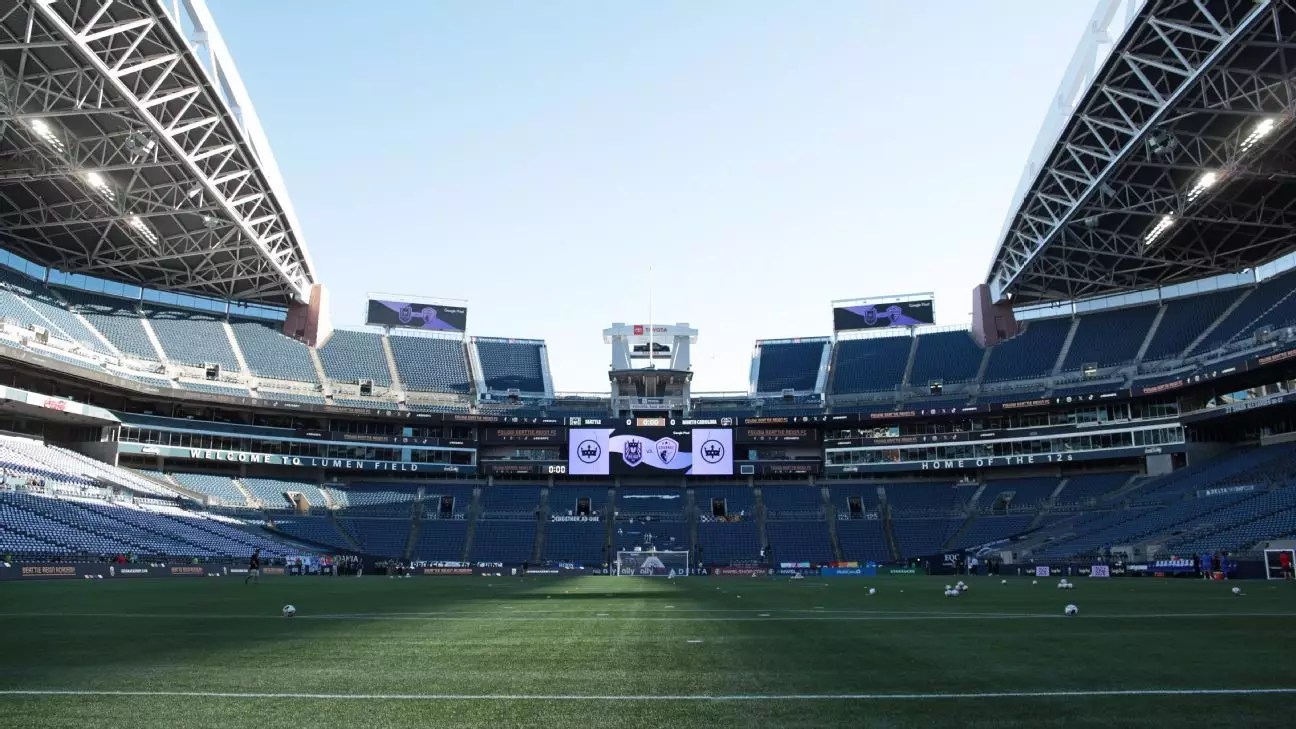As the National Women’s Soccer League (NWSL) prepares for the upcoming 2026 FIFA Men’s World Cup co-hosted by the United States, it finds itself at a crossroads—an intersection of opportunity and formidable challenges. Commissioner Jessica Berman’s recent statement indicates that the league will not halt its activities during this monumental global sporting event. This decision signals a bold approach to maintaining momentum for women’s soccer amidst a landscape dominated by men’s football. Nevertheless, the logistics of managing league operations during a period likely to draw significant attention away from women’s sports presents a multifaceted conundrum.
Berman has remarried the challenges faced by previous years, citing the complexities of overlapping events. While the Major League Soccer (MLS) will take a break during the World Cup period, the NWSL aims to play games, leading to a fascinating juxtaposition between the leagues. The potential for concurrent engagements might create an intriguing narrative, but it could also water down the focus on women’s soccer, which has often struggled to gain equal footing in the sporting arena.
Challenges of Training Grounds and Facilities
The forthcoming World Cup will significantly impact four NWSL teams, namely the Houston Dash, Kansas City Current, Racing Louisville FC, and Utah Royals FC, as their training facilities will be commandeered for use as base camps for national teams. This disruption, amplified by FIFA’s stringent requirements for exclusive use of facilities, raises questions about how these teams will adapt mid-season. The prospect of relocating training operations can create logistical nightmares, forcing teams to scramble for alternative venues, often leading to increased operational costs and challenges in team cohesion.
As these teams navigate this challenging terrain, they may need to tap into local venues or adjust their regular schedules. Instead of being impeded, however, there’s an opportunity to engage with their communities in novel ways. By shifting their training activities to public venues, they could attract local fans, fostering greater engagement and support at a time when visibility is both critical and potentially transformative.
The Dilemma of Overlapping Events
The summer of 2026 will be particularly congested for women’s soccer with multiple overlapping tournaments, complicating things further for the NWSL’s schedule. Just last year, the league found itself grappling with logistical challenges due to the Olympics, leading to a pause in regular-season play. This evolving landscape necessitates a proactive strategy that looks beyond short-term hurdles to envision a connected future that celebrates and showcases women’s soccer alongside the broader sporting context.
Past experiences serve as cautionary tales. Last year’s short-lived collaboration with Mexico’s Liga MX Femenil raises questions about how cross-league competitions may distract from the NWSL’s own branding and momentum. While international events hold a unique allure, Berman’s team must ensure that they do not reflect poorly on the NWSL’s ambitions. Given that there is another Women’s World Cup in Brazil scheduled for 2027 and the upcoming Olympics in Los Angeles in 2028, the stakes could not be higher.
Charting a New Course for Women’s Soccer
With unprecedented challenges on the horizon, the NWSL stands at a pivotal moment that could define its trajectory for years to come. The commitment to maintain games during the World Cup, rather than succumb to the usual halting of operations, connects to a larger dialogue about women’s sports representation. The recent submission of the U.S. bid to host the 2031 Women’s World Cup underscores a burgeoning recognition of women’s soccer’s potential.
Berman’s focus on navigating the logistics required to run a successful season in light of increased competition ultimately speaks volumes about the league’s long-term growth mindset. This fortitude can position the NWSL not just as a participant but as a formidable player in the global soccer landscape.
With expansion on the agenda, including growing from 32 teams to 48 for the Women’s World Cup in the future, the need for sustainable planning and robust marketing strategies becomes increasingly urgent. By taking necessary steps toward progressive league management and community engagement, the NWSL not only safeguards its future but also plays an instrumental role in redefining the narrative surrounding women’s soccer.
A Bright Light Ahead
The road ahead might be riddled with complexities, but the determination to carve out space for women’s soccer amidst global distractions is perhaps the most compelling narrative of all. As the NWSL forges ahead, it will need to balance the inevitable spotlight cast by the men’s tournament while laying the groundwork for women’s soccer to thrive, both on and off the pitch. Jessica Berman’s leadership may very well catalyze a new era in the NWSL’s narrative—a time when women’s sports are not merely an afterthought during men’s events but stand tall and proud in the limelight.


Leave a Reply